Transportation industry: Optimising workforce for peak holiday travel
As a Recruitment Agency in South Africa, we understand the holiday season comes with many challenges. The holiday season brings a whirlwind of activity for South Africa’s transportation sector, from bustling airports to jam-packed bus terminals and overloaded freight services. To keep operations running smoothly, transport businesses need to align their workforce strategies with the surge in demand. Optimizing staff during these peak times isn’t just a matter of scheduling shifts—it’s a carefully balanced act of forecasting, hiring, and operational finesse. In this article, we will discuss effective workforce strategies for peak holiday travel in transportation.
Why the holiday season challenges workforce planning
The festive period sees exponential growth in the number of people travelling domestically and internationally. Passengers expect seamless service, whether boarding an aeroplane, taking long-haul buses, or relying on cargo and logistics services for gift deliveries. However, without proper staffing and workforce strategies for peak holiday season, these high expectations can quickly lead to delays, dissatisfaction, and operational strain.
Key challenges include
– Fluctuating Passenger and Cargo Volumes: Predicting demand is tricky, especially with last-minute bookings and varying freight needs.
– Limited Workforce Availability: Regular staff might take time off, leaving gaps during the busiest time of year.
– Maintaining Service Standards: Understaffed operations can result in missed schedules, slower turnarounds, and customer complaints.
Strategies for effective staff optimization in the transportation sector during peak holiday season
The holiday season introduces unique challenges for transportation businesses. Increased demand, operational bottlenecks, and heightened customer expectations place significant pressure on companies to perform seamlessly. Success lies in adopting tailored workforce strategies designed specifically for this period. Below, we explore advanced and actionable methods to optimise staff operations in the transportation industry during the festive rush.
1. Data-driven workforce planning
The foundation of effective staff optimization lies in understanding and forecasting demand. By leveraging data analytics, transportation companies can identify patterns in peak travel times and plan resources accordingly.
How it works
– Airports: Use historical passenger data to predict peak times for baggage handling, check-ins, and security clearance. Preemptively scheduling additional ground staff ensures smooth operations during anticipated rush hours.
– Bus Companies: Analyse ticket sales trends to determine the busiest travel dates and deploy extra drivers, ticketing agents, and on-site supervisors.
– Logistics Providers: Map e-commerce and freight volume patterns to schedule warehouse staff and delivery drivers efficiently.
Tools to consider
– Workforce analytics platforms like Kronos or BambooHR.
– Real-time demand tracking through AI-powered dashboards.
– Integration of predictive modelling for demand forecasting.
2. Scaling up with seasonal employment solutions
The holiday season typically outpaces the capacity of permanent employees, necessitating a flexible workforce. Hiring temporary or seasonal workers provides the scalability needed to meet heightened demands without long-term commitments.
Actionable steps
– Partner with specialised staffing agencies: Collaborate with firms experienced in sourcing industry-specific talent such as licensed drivers, baggage handlers, and logistics coordinators.
– On-demand talent pools: Engage pre-vetted candidates through agencies that maintain ready-to-hire workers who can step in immediately.
– Tailored recruitment: Seek multilingual staff for airlines to assist international travellers and specialised loaders for logistics operations handling fragile or high-value cargo.
By using seasonal workers, transportation companies can ramp up staffing levels quickly and efficiently during critical periods.
3. Leveraging workforce technology
Technology plays a pivotal role in managing and optimising staffing during the holidays. From real-time scheduling to automated compliance tracking, modern tools can transform workforce operations.
Examples of applications
– AI-Powered Scheduling: Platforms like Deputy or Humanity can analyse workforce availability, travel demand, and operational constraints to craft optimal shift patterns.
– Real-Time Monitoring: Use GPS-enabled apps for tracking driver routes, ensuring efficiency and compliance.
– Fatigue Management Tools: Schedule staff to minimise exhaustion, especially for roles requiring intense physical or mental focus, such as drivers and air traffic controllers.
The result is a workforce that is not only well-utilised but also compliant with safety regulations and performance standards.
4. Keeping employees motivated during holiday rush
Employee satisfaction directly impacts productivity and service quality during peak times. To maintain morale under high-pressure conditions, companies must prioritise incentives and support mechanisms.
Motivation strategies
– Performance Bonuses: Reward employees who go above and beyond with financial incentives tied to metrics like punctuality and customer satisfaction.
– Flexible Scheduling: Allow staff to request preferred shifts or trade schedules to accommodate personal commitments.
– Recognition Programs: Celebrate milestones or exemplary service with awards, team events, or public acknowledgments.
Employee well-being programs, including stress management workshops and wellness breaks, can also reduce burnout and ensure sustained productivity.
5. Outsourcing non-core tasks
Outsourcing allows transportation companies to focus on core functions while delegating time-consuming administrative work to external specialists. This approach enhances efficiency during the busiest times of the year.
Commonly outsourced tasks
– Payroll Management: Outsource payroll to ensure timely and accurate compensation for temporary and permanent staff.
– Industrial Relations: Engage third-party experts to handle labour disputes or compliance reviews.
– Customer Support: Outsource non-critical customer service tasks, such as general inquiries or feedback processing, to external teams.
With reliable outsourcing partners, transportation businesses can redirect resources to critical operations, ensuring smooth service delivery.
6. Ensuring compliance with labour laws
South Africa’s labour laws demand strict adherence, especially during periods of increased staffing. Companies must be vigilant in observing regulations related to temporary or seasonal employment.
Compliance essentials
– Adhere to maximum working hours and provide legally mandated overtime pay.
– Ensure that temporary employees receive fair wages and benefits in line with labour contracts.
– Maintain transparency in employment terms to avoid disputes.
Partnering with a staffing agency familiar with South African labour regulations simplifies compliance, mitigating risks while protecting the company’s reputation.
7. Simplifying onboarding processes
Bringing temporary workers up to speed quickly is critical during the holiday rush. Streamlined onboarding not only saves time but also ensures new hires are effective from day one.
Streamlined tactics
– Use video tutorials and concise training guides for common procedures.
– Assign mentors or supervisors to oversee new hires during their first shifts.
– Conduct brief but comprehensive orientations that cover essential policies and expectations.
This approach minimises disruptions and ensures that seasonal employees integrate seamlessly into existing teams.
8. Prioritising customer service excellence
The holiday season is a stressful time for travellers. Empathetic and effective customer service can be a competitive differentiator for transportation companies.
How to enhance customer service
– Train staff to de-escalate conflicts and manage complaints calmly.
– Provide multilingual support for international travellers at airports and bus terminals.
– Empower employees with tools and authority to resolve issues on the spot, such as rebooking tickets or arranging alternative transport.
By prioritising customer satisfaction, transportation businesses can build loyalty and positive word-of-mouth even during challenging periods.
Optimising staff for the holiday season is not just about increasing numbers; it’s about aligning strategy, flexibility, and technology to meet heightened demands. With a combination of advanced planning, temporary workforce solutions, and employee engagement strategies, transportation companies can deliver exceptional service during the most critical time of the year.
How MASA can help transportation companies thrive during the holidays
Measured Ability South Africa (MASA) understands the unique challenges of the transportation sector. From implementing workforce strategies for peak holiday seasons, and sourcing certified drivers to providing logistics staff or temporary warehouse employees, MASA’s tailored staffing solutions are designed to meet peak-season demands. By partnering with MASA, you gain access to a network of industry professionals who ensure your operations remain smooth and stress-free.
Visit MASA’s homepage to learn more about workforce strategies for peak holiday travel in transportation and how we can elevate your staffing strategy this festive season.












